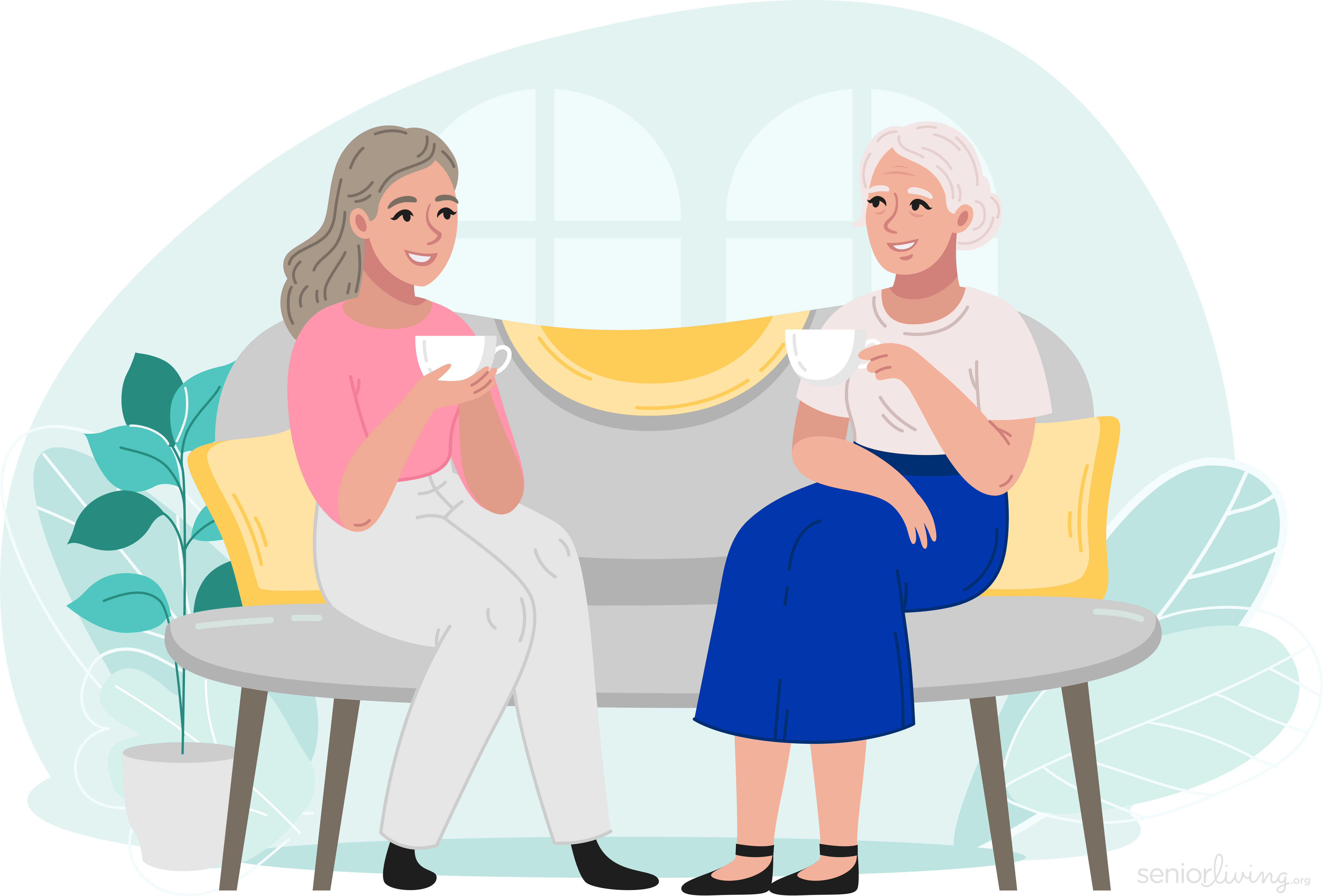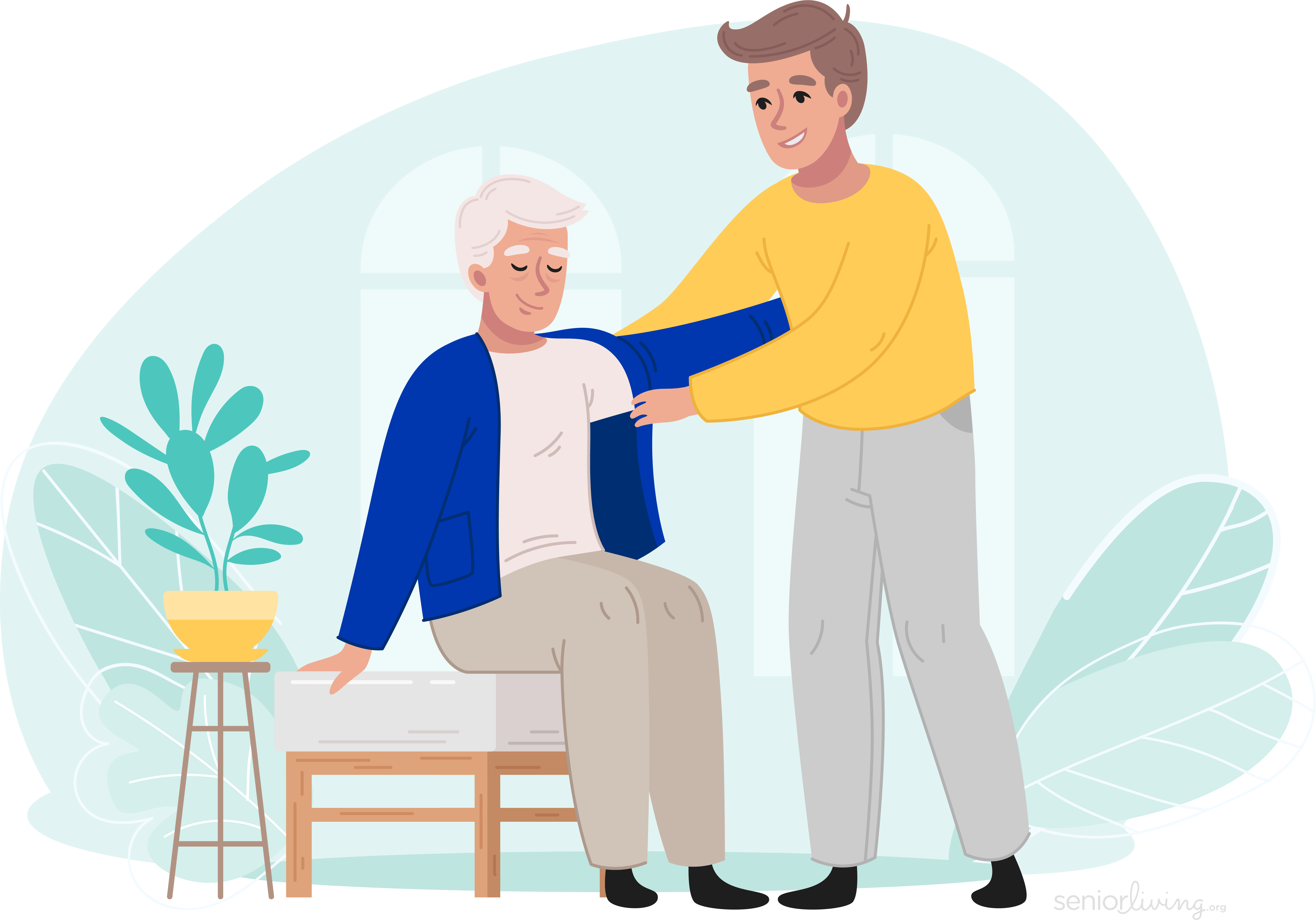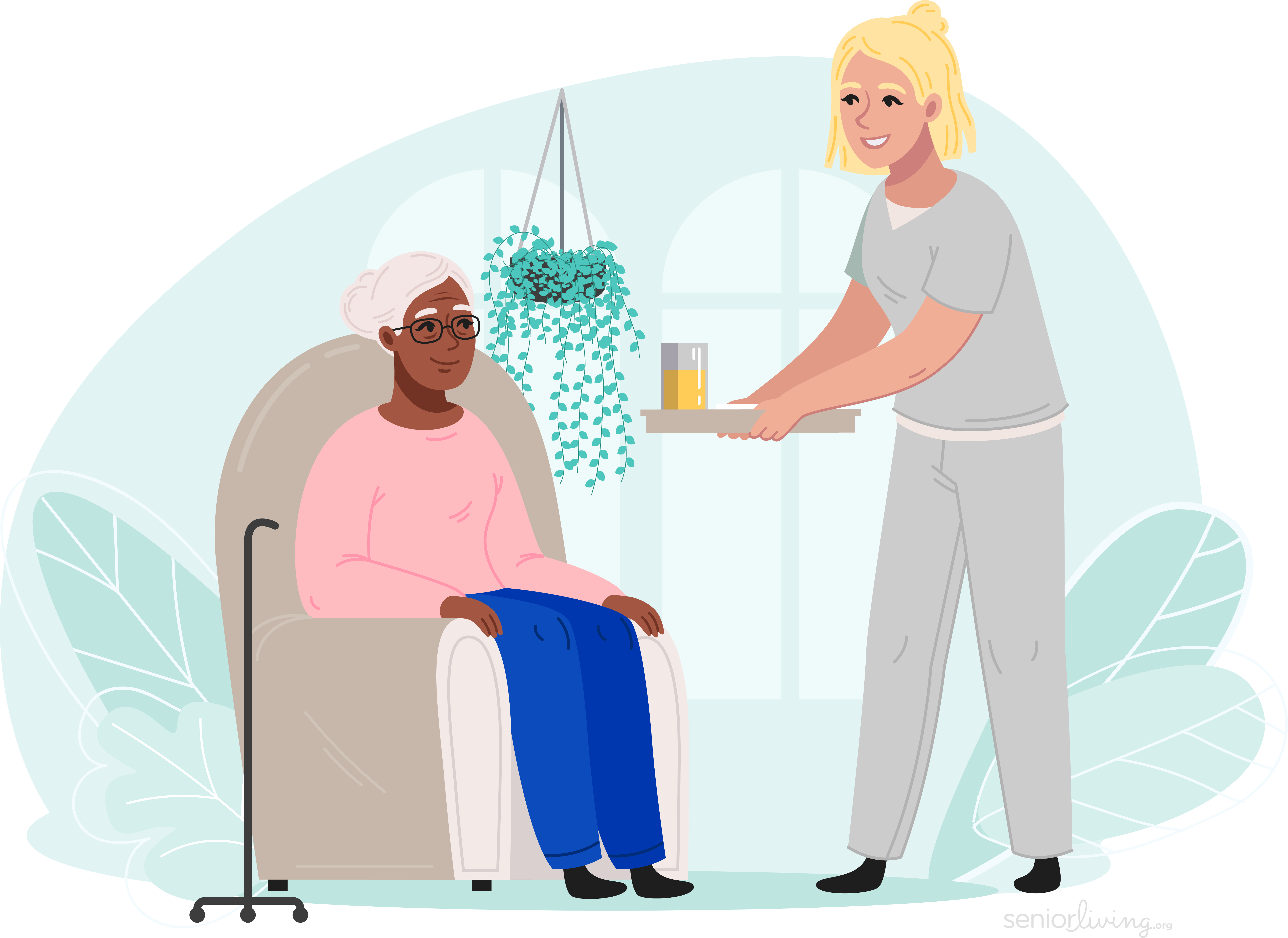Aging in Place
A guide to aging in place in 2025.
SeniorLiving.org is supported by commissions from providers listed on our site. Read our Editorial Guidelines
Find Home Care Providers Near You
Join 1,085,046 Seniors Who've Found Housing Communities on SeniorLiving.org.
Or Call: (855) 241-1699Find Home Care Providers Near You
It’s no secret that maintaining a home and being safe in it becomes more challenging as you age. The lovely area rug you bought on a special vacation may now be more of a slipping hazard than an accent piece. The annoying drip of a faucet you used to easily fix now requires more strength than you have in your hands. Traveling or driving may now be a challenge.
Aging in place has potential challenges, but also many rewards. The pros and cons can change quickly, and weighing them requires planning.
If you or a loved one is hoping to age in place, read on. In this guide, our senior housing experts will discuss the issues you may face. We’ll also provide tips for how to age in place safely and happily.
What Is Aging in Place?

Aging in place enables you to live independently, surrounded by the things you love, but that doesn’t mean you need to go it alone. In many instances, at-home care and community support may enable you to safely live at home.
The process looks different for different people. Your health, physical abilities, and mental outlook will all play a role in what aging in place is like for you. The layout and condition of your home, as well as your neighborhood or community, will also play a part.
Our free housing and care finder uses your unique needs to curate a list of the best options in your area.
When to Start Planning
In a perfect world, you’d start creating a plan for aging in place many years in advance. Of course, thinking about how and where you’ll grow old can be stressful. Early planning has the benefit of eliminating that stress, since you’ll be crunching numbers and looking at options years before you need to make any actual decisions.
Some people remain highly independent well into their later years. Others require at-home services and support with activities of daily living (ADLs). No matter where you are on that spectrum, you want to thrive at home — not just live at home. Figuring out your current and future needs can help you create a plan for aging in place realistically.
Unfortunately, we don’t get to live in a perfect world. If you haven’t thought out your plan yet, don’t panic. Take a deep breath, and think through the topics below.
How Is Your Physical Health?
None of us has a crystal ball, and health-related curve balls are common. It makes sense, however, to take your current health status into account when you’re making plans. If you have a condition such as diabetes or heart disease, self-care will be imperative to controlling your condition. You may also need to think about arrangements for outside help with ADLs, such as daily medication use or insulin testing.
Did You Know? If your health-care provider certifies you as homebound, Medicare will pay for at-home services such as intermittent skilled nursing care, speech-language pathology services, and physical or occupational therapy.1
Physical attributes you currently rely on, such as good hearing, vision, and physical strength, may become issues as you age. Looking into your options for home health care and services such as physical therapy ahead of time may be beneficial. Health insurance plans, including Medicare, often pay for those types of services if you meet eligibility requirements.
How Is Your Financial Health?
Your financial liquidity and overall assets may play a role in whether you choose to age in place or pursue other options, such as an assisted living community.
- Some individuals use personal funds, such as savings or a pension, to pay for home modifications and other supports that allow you to age in place.
- You may also wish to look into getting a reverse mortgage if you own your home.
- It may be a good time to consider getting a long-term care insurance policy. Look for a policy that will cover home-based care, such as a home health aide.
- Governmental programs such as Medicaid may also pay for home-based services and support your financial health. Medicaid coverage varies by state, so be sure to check your local Medicaid regulations.
Many seniors who age in place at home live alone without family nearby. Watch the video below with SeniorLiving.org Editor-in-Chief Jeff Hoyt and attorney Eric Olsen to learn about financial and social help available to older adults living on their own.

Is Your Home Ready?
Aging in place doesn’t always mean staying put in your home as is. It may require modifying your home with alterations such as stair lifts, bathroom grab bars, and walk-in bathtubs.
It may make sense to arm your home with a medical alert system, which will ensure that help will be on the way quickly if you feel ill or take a fall. Many medical alert systems also alert you to environmental hazards, such as kitchen smoke.
Pro Tip: Visit our list of this year’s best medical alert systems to learn more about your options.
Simple fixes, such as adding night lights and removing area rugs, can help you avoid falls and accidents. If you have concerns about entryway stairs or the width of your hallways, consider bringing in an industry expert to discuss what these alterations would entail.
Planning to Age in Place Somewhere New
Moving may make sense in some instances, especially if safety modifications aren’t possible or cost effective. You may live in a five-story building that doesn’t have an elevator, for example, or in a sprawling, three-story suburban home that would be expensive to modify and challenging to maintain. You may decide to age in place in a new home.
Your surrounding area should also be taken into account, especially if you live in an isolated rural area without great cell service or access to neighbors. That, too, may require a change, if you choose to make one. That’s the bottom line to successful aging in place: having choices, and making them effectively.
Did You Know? More Americans age in place in the country than in the city. According to the U.S. Department of Agriculture, people aged 65 or older make up 19% of the population of rural areas. In urban areas, people in that age group make up 15% of the population.2
Care.com connects families with a network of qualified caregivers.

Avoiding Isolation: A Key Element to Aging in Place Well
Your social life is an important consideration when thinking about aging in place. If you live alone, put plans in place for maintaining mobility and seeing others socially. That may mean looking into local car services you can keep on retainer if you can no longer drive.
A Word About Aging in Place With Dementia
Dementia can be a troubling diagnosis for people who wish to remain independent at home, but aging in place may be the best medicine if you or a loved one has early or mild dementia.
The American Medical Association calls aging in place an effective mainstream strategy of care that can be used for older people with dementia.3 The reasoning is simple: Being in familiar surroundings can reduce stress and feel safe and soothing for people with memory loss. Aging at home may not be a good choice for people with severe dementia or Alzheimer’s disease. And, of course, issues such as safety, opportunities for socialization, and brain stimulation must be factored into the equation. At-home support and care from hired professionals or loved ones are essential to thrive at home with dementia.
Challenges to Aging in Place
The aging process can be challenging, both mentally and physically. These changes can make day-to-day life at home more difficult than it was before. As you age, you may have:
- Poorer eyesight
- Reduced muscle mass, strength, and flexibility
- Diminished physical endurance
- Problems with balance
- Reduced hearing
Taking these potential issues into account can help you age in place more successfully. It may mean relying on others for help with ADLs, such as:
- Transportation
- Household chores and repairs
- Daily hygiene
- Medication management

SeniorLiving.org is supported by commissions from providers listed on our site. Read our Editorial Guidelines
The Importance of Aging in Place
In 2000, there were just over 35 million American citizens aged 65 or older. By 2030, according to the U.S. Census Bureau, that age group will be about 70 million Americans, which will be almost 20 percent of the total US population — and a force to be reckoned with.
If your city or community doesn’t provide necessary services, such as senior centers, adult day care, Meals on Wheels, or easy access to voting, reach out to your local representative to learn about your options. You can also contact your local Area Agency on Aging to find out about local resources you may not be aware of.
What Does It Mean for My Family?
If you decide to age in place, your family may jump in to help with finances or caregiving. Not all families, however, have the skills, availability, or assets to support your choice.
You may have one or more family members who can provide caregiving for you at home. In some instances, a family member or friend may be able to get paid for providing that service. Medicaid, long-term care insurance, and veterans programs all provide paid caregiver options you may be eligible for. 4
The National Family Caregiver Support Program (NFCSP) provides caregiver services through a national network of local Area Agencies on Aging. Through NFCSP, your family members may be eligible for caregiver training, support groups, and other services that empower them to better support you.5
If you don’t have access to familial support, at-home professional caregivers, neighbors, and friends may be able to take on that role.
Pro Tip: Read our guide to caregiving in senior care to learn more
U.S. Department of Health and Human Services. (2023). Medicare & Home Health Care.
USDA. (2018). Rural Aging Occurs in Different Places for Very Different Reasons.
AMA. (2023). Why aging in place can be the best option for dementia patients.
usa.gov. (2023). Get paid as a caregiver for a family member.
NewYorkState.gov. (2024). National Family Caregiver Support Program.



